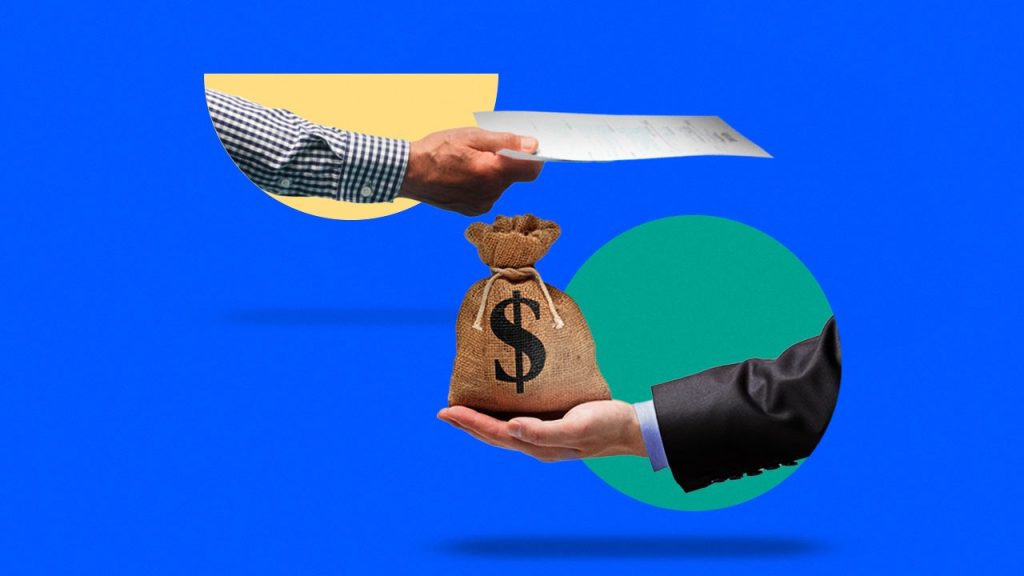Credit: MoMo Productions/Getty Images: Illustration by Issiah Davis/Bankrate
Key takeaways
- A business line of credit typically allows you to reuse the credit line, similar to a business credit card.
- Each lender sets its own documentation requirements which will include personal and business financial statements, bank statements, tax returns and credit scores.
- Online lenders typically have more relaxed requirements to apply, giving small businesses with low revenue or poor credit a better chance of approval.
High inflation will continue to impact operations for many small businesses over the next few years, causing businesses to stretch dollars and seek funding. According to the 2024 Small Business Credit Survey, 56 percent of employer-based businesses faced challenges with paying operating expenses in the past year. Thirty-eight percent of businesses facing financial challenges received business loans to weather the challenge.
A business line of credit can be a powerful tool for entrepreneurs looking to build or expand their businesses. For borrowers who need regular access to funds, a business line of credit can allow flexibility similar to a business credit card. Once borrowed money is repaid, the borrower can reaccess the full line of credit if needed.
Organizing your credit documents before applying for a business line of credit can help the application process move swiftly. Learn what documents you need for a business line of credit and discover the best business lines of credit that can cover your business’s needs.
What is needed for a business line of credit?
Business lines of credit typically have more lenient requirements to get approved than a standard business loan. Make sure you meet the requirements and have all the necessary documents on hand when you apply to keep the process moving smoothly.
Requirements for a business line of credit
The requirements for a business line of credit can differ depending on the lender you choose. Bank lenders tend to have more strict requirements, while online lenders relax requirements so that more small businesses have better odds of approval. Keep these requirements in mind when applying for a business line of credit:
- Credit score: Banks typically want to see a personal credit score of 670 or higher, while many online lenders accept a score of 600 or lower
- Time in business: Banks often require at least two years in business, but online lenders accept businesses with six months in the market
- Annual revenue: Banks may require $150,000 to $250,000 in annual revenue, while online lenders often accept $100,000 or less.
Documents about yourself
Lenders know that small business owners’ business and personal finances are often intertwined. In addition to double-checking your identity, they want a look at your personal financial health.
Be prepared to submit these business line of credit documents along with your application that substantiate the following:
- Your name, address, and date of birth (a government-issued photo ID can do the trick)
- Personal bank statements
- Personal tax returns
While the lender can pull your personal credit report, you may wish to do so as well — it’ll help you assess whether you meet creditworthiness requirements.
Documents about your business
Lenders will want to see thorough documentation outlining your business before agreeing to issue a line of credit. Though not all lenders will require all of these documents, be prepared to provide the following:
Other documents
These business line of credit documents are only relevant to secured lines of credit.
- Collateral information: Documents related to any assets that belong to the company. Assets that can be used as collateral for business loans may include equipment, technology, vehicles, real estate and bank accounts. You may need to include an appraisal to prove the asset’s worth.
- UCC lien filing, if applicable: This refers to the paperwork filed under the Uniform Commercial Code formalizing the lender’s right to your collateral in the event of non-payment. The lender should generate this as a part of your loan’s closing documents, so you are not responsible for creating it. Be sure to retain a copy, though, and apply for a lien release once the line of credit has been closed.
Documents needed for SBA business lines of credit
SBA CAPLines are revolving or non-revolving lines of credit available to businesses looking to cover short-term expenses. There are several types:
| Seasonal CAPLine | Used for seasonal changes in inventory, accounts receivables or labor costs. |
| Contract CAPLine | Covers the cost of direct labor and material for assignable contracts. |
| Builders CAPLine | Finances construction or renovation costs for small builders. Uses the construction or renovation project as collateral. |
| Working CAPLine | Asset-based revolving credit line used for short-term business needs, which is often extending credit to other small businesses. For this line of credit, repayment is made by converting short-term assets into cash. |
When applying for an SBA loan, you’ll submit several business line of credit documents along with your application:
- SBA Form 1919 (borrower’s personal information)
- SBA Form 413 (borrower’s personal finance statement)
- Income statement and balance sheets or tax returns from the past three fiscal years
- Business debt schedule, unless applying for a Small Loan
- Projected financial statements
- List of affiliates and subsidiaries
- Document providing company details, including history, challenges and reason for funding request
- Appraisals and purchase agreements (only if purchasing an existing business)
The bottom line
Choosing a business line of credit that suits your unique needs can help you to expand responsibly. What you need to apply for a business line of credit may depend on your lender and how much you are asking to borrow. In general, expect to provide thorough business financial statements, bank account statements and formation documents, along with personal bank statements, tax returns and your credit report.
Keeping copies of these business line of credit documents handy — both physically and digitally — can make the application process easier.
Frequently asked questions
-
Yes, as part of the business loan application process, lenders may request personal and business tax returns to assess the financial health of the business.
-
To open a line of credit, you will need to provide personal and business financial statements such as bank statements, tax returns, balance sheets and financial projections. You may also need to prove your business formation and provide a funding request or business plan. Lenders will also look at your business’s time in business, credit history and annual revenue when approving the credit line.
-
Business lines of credit tend to have more lenient eligibility requirements than other types of business loans. However, traditional banks may have strict requirements, such as having two years in business and $150,000 in annual revenue. You may be able to find more lenient requirements from an online lender.
Read the full article here









